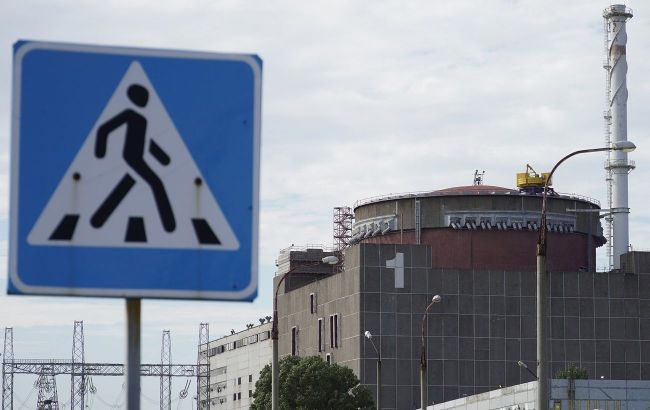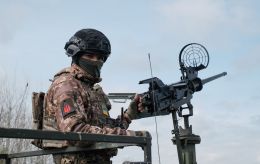Zaporizhzhia Nuclear Power Plant left disconnected from power line for over 24 hours - IAEA
 Zaporizhzhia Nuclear Power Plant (Illustrative photo: Getty Images)
Zaporizhzhia Nuclear Power Plant (Illustrative photo: Getty Images)
The Zaporizhzhia Nuclear Power Plant (ZNPP), occupied by Russian forces, has lost connection to its only backup power line, with a voltage of 330 kilovolts (kV), for the second time this month. The outage lasted for over 24 hours, reports the International Atomic Energy Agency (IAEA).
According to IAEA Director General Rafael Grossi, following the loss of power, the nuclear facility became reliant on its sole external power source, which is critical for cooling the reactor and maintaining other essential nuclear safety functions.
IAEA representatives present at the Russian-occupied Zaporizhzhia Nuclear Power Plant (ZNPP) were informed that the power line was disconnected for more than 26 hours (from Monday to Tuesday) due to unspecified damage on the other side of the Dnipro River.
"It took place three weeks after another disconnection of the same line. In both instances, the ZNPP continued to receive electricity from its sole 750 kV line," the Agency reported.
The IAEA also recalled that, before Russia's full-scale invasion of Ukraine, the ZNPP - Europe's largest nuclear power plant - had access to four 750 kV lines and six 330 kV lines.
"What once would have been unthinkable – a major nuclear power plant suffering repeated off-site power cuts – has become a frequent occurrence during this devastating war. The situation is clearly not getting any better in this regard," Grossi stated.
The IAEA Director General emphasized that the nuclear safety and security situation at the Zaporizhzhia plant remains highly unstable.
Situation at nuclear power plants in Ukraine
The IAEA team at the Russian-occupied Zaporizhzhia Nuclear Power Plant (ZNPP) has continued to hear explosions over the past week, though no reports of damage to the plant have been received.
"The IAEA teams present at the Khmelnytskyy, Rivne and South Ukraine NPPs and the Chornobyl site reported that nuclear safety and security is being maintained despite the effects of the ongoing conflict, including air raid alarms for several days over the past week," the Agency stated.
At the South Ukraine Nuclear Power Plant, IAEA representatives were informed that reactor No. 1 was disconnected from the grid for about four hours on the evening of October 22 due to a false signal to the block’s protection systems, without triggering the reactor’s safety systems.
"The root cause of the event is being investigated. The reactor – one of three at the plant – is again generating power for the grid," the IAEA reported.
Additionally, at the request of the Ukrainian side, an IAEA team is visiting six electrical substations across Ukraine this week as part of an infrastructure assessment for the country's power grid, essential for nuclear safety. This work began in September.
Importance of stable power supply connection
The IAEA emphasized that reliable access to external power sources is one of the seven indispensable pillars of nuclear safety during armed conflict.
The Agency also noted that the safety of operational nuclear power plants depends on a stable connection to the power grid, but in recent months, the situation in this regard has become increasingly unstable.
As previously reported, on October 22, Ukraine’s Ministry of Energy announced that Ukrainian energy workers had repaired one of the power lines serving the temporarily occupied Zaporizhzhia Nuclear Power Plant, which had been damaged by Russian shelling.
On October 21, one of the two power lines connecting the occupied Zaporizhzhia NPP to Ukraine’s unified energy system was knocked out due to Russian attacks. At the time, the Ministry of Energy warned of a looming blackout threat.

